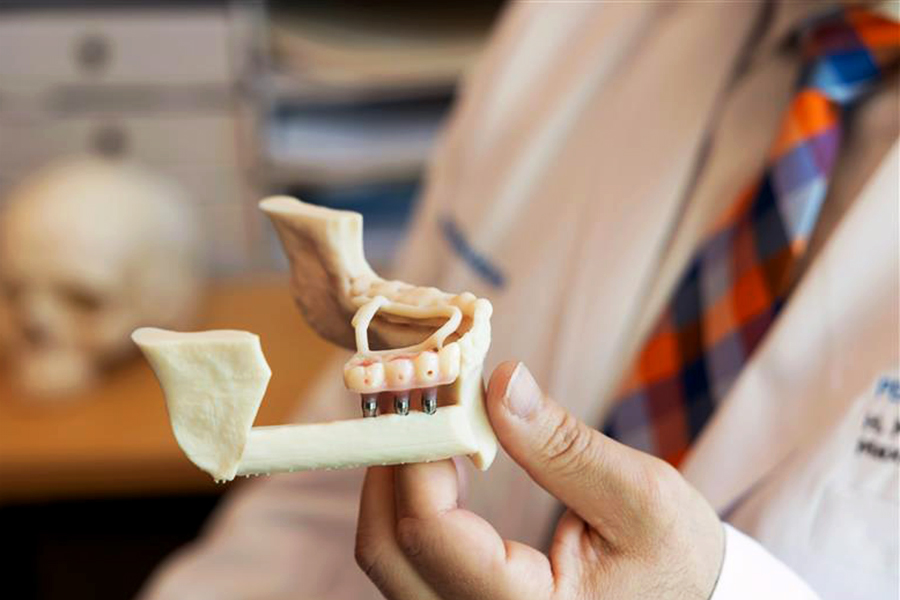U.S. News & World Report– June 16, 2017
As a pediatric endocrinologist specializing in pubertal development, I am often asked for advice on how to help parents navigate their children’s physical and emotional changes. While puberty can be a challenging time for parents and kids, it doesn’t have to be.
To best prepare, I suggest starting early and predicting possible challenges. Since pubertal change can start as early as age 7 in girls, it’s important to begin thinking about this early on. The normal age range to start puberty in girls is 7 to 13 years, and in boys it’s between 9 and 14 years. The process typically lasts three years for the physical changes, and longer for the behavioral and social ones.
Here are some tips to help you and your child handle the changes ahead:
Be honest and open using age-appropriate and understandable language. Talk about the changes that are happening to your child’s body. The important message to relay is that all children go through these changes, and that they are normal, whether the changes occur at age 7 or 13.
Start the conversation early. Kids feel emotionally close and understood by the adults in their lives if there are ongoing conversations about this process that start at a young age. Start these discussions before the changes begin and explain what will happen to their bodies as they grow up. Many schools are starting puberty education by fourth grade, so the subject might come up. For young kids, remind them that losing teeth is another example of a change that boys and girls go through.
Remember what puberty involves. Puberty is about growth and body changes, and it doesn’t have to immediately be about sex and a child’s sexuality. You can discuss “stinky armpits” first if that makes you feel comfortable (and it always gets a laugh from 6-year-olds). There’s no need to leap to menstruation and sex. If these are ongoing conversations, those subjects will naturally come up later. There are also lots of great books written for kids on these subjects.
Kids should dress appropriately. Kids should wear clothes that are appropriate for their age. This can be a challenge for some children as overly revealing clothes are often marketed to younger girls, or if girls are tall, the clothes that fit their size don’t match their age. Parents should stand firm on what they think is right for their family and values.
Limit the use of electronic devices. Our brains just aren’t evolved for either the devices or the content that we have available to us now. Human brain development isn’t complete until our mid-20s, and the parts that mature last are precisely the same parts that control our behavior, emotions and decision-making, such as setting limits, assessing risks and controlling our desires. Kids’ and teens’ brains are structurally and functionally different from adults’ brains, and this makes them more susceptible than adults to electronic device addiction. (It’s also why addictive habits, such as drinking and smoking, that start in adolescence are so hard to break.) These developing parts of the brain are also very vulnerable to negative influences from the environment, including electronic media.
If kids regularly use smartphones or tablets instead of engaging in other activities, their brains become used to the “high” from new information that they get every time they look at the devices, and an addiction to the digital world develops. When devices take center stage, kids stop getting involved with many of other activities, such as running around outside at a playground or playing with their friends – activities that they used to enjoy and that are very important for normal brain development.
I suggest holding off on giving your child a smartphone or tablet for as long as you can. If they need to be able to text or call you, get them a “dumb phone!”
Monitor media use, and be sure it’s age-appropriate. Both TV and online viewing should happen together as a family or in a shared space so that parents can be aware of what kids are watching. Young kids can now access games, videos, social media and other websites with content that can be scary or too mature for them, and this can be traumatizing. In addition, social media is often unsupervised, can be a source of bullying and can lead to kids being socially aggressive toward each other.
Limit nonacademic screen time to one to two hours per day, and restrict the sites you allow your child to visit. I also recommend monitoring your kids’ accounts regularly. This is not spying, but supervising. You can explain that as long as they are under 18, their accounts are also your accounts, and since you are legally responsible for their online behavior, you need to know what they are doing and what they’re exposing themselves to.
Emphasize spending time together. Finding activities you all enjoy doing together can be challenging as kids and teens get older, but it’s important for you to continue to stay close in ways that support both their emotional and physical health. This will also help you feel close to them, as puberty can be a tough time for parents as well, since they feel their kids are growing up and separating from them.
Think of activities you both enjoy doing – play or watch sports, take a walk, participate in a community service project or cook together. And serve as a model to your kids, while you do these things by not being on your own phone all the time. By instilling these healthy behaviors, you are supporting your child’s mental well-being as well as your own. You’ll also be sticking with them every step of the way as they grow and develop.






